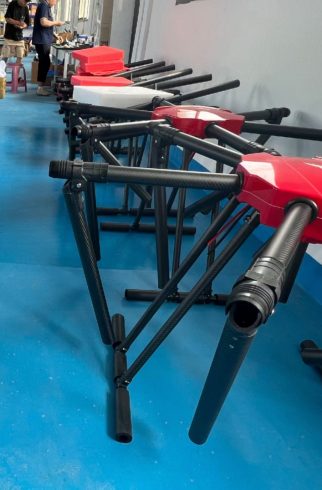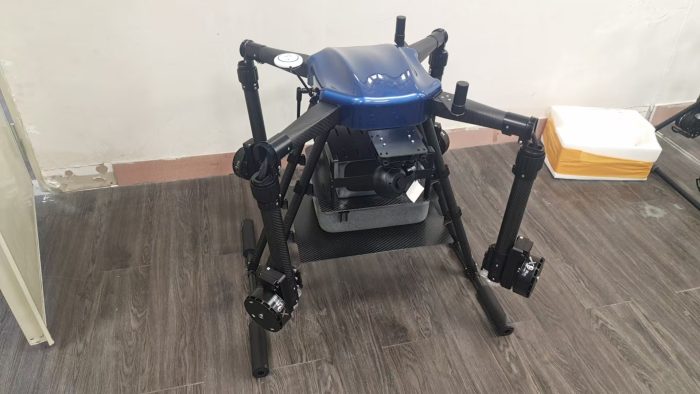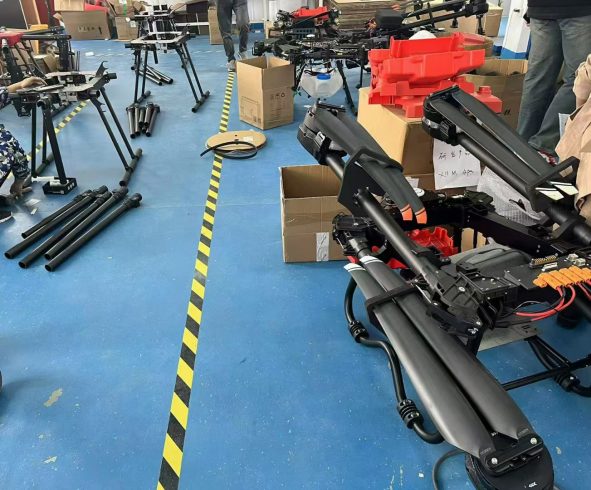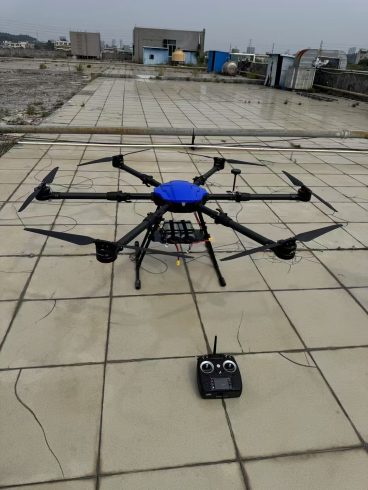![图片[1]-Drone Sprayers for Small Farms: Affordable Precision for Big Impact-msoen](https://www.msoen.com/wp-content/uploads/2025/04/5bb323e000184638-674x1024.jpg)
Small-scale farms, often constrained by limited budgets, fragmented plots, and labor shortages, face unique challenges in adopting advanced agricultural technologies. Yet, drone sprayers—once considered tools for large agribusinesses—are now emerging as accessible, cost-effective solutions for smallholders. By combining precision spraying with user-friendly designs, these drones empower small farms to boost yields, reduce waste, and compete sustainably. This article explores how drone sprayers are leveling the playing field for small-scale agriculture.
Why Small Farms Need Drone Sprayers
Small farms (typically <50 acres) struggle with:
- High Labor Costs: Manual spraying consumes 30–50% of operational budgets.
- Inefficient Chemical Use: Over-spraying wastes inputs and harms soil health.
- Terrain Challenges: Sloped, irregular, or mixed-crop plots hinder tractor access.
- Sustainability Pressures: Buyers demand eco-certified produce, requiring traceable, low-chemical practices.
Drone sprayers address these issues by offering precision, affordability, and scalability.
Key Features of Small Farm Drone Sprayers
- Compact and Lightweight Designs
- 5–10L Tanks: Ideal for plots under 20 acres, balancing coverage and portability.
- Foldable Frames: Easy to transport in pickup trucks or storage sheds.
- Under 25 kg: Exempt from stringent aviation regulations in many regions.
- User-Friendly Technology
- Auto-Pilot Modes: Pre-loaded field maps enable one-click spraying for non-technical users.
- Smartphone Control: Intuitive apps with tutorials for flight planning and maintenance.
- Low-Cost Sensors: Basic multispectral cameras detect crop stress without expensive AI.
- Budget-Conscious Pricing
- Entry-Level Models: Start at $3,000–$8,000—comparable to annual labor costs for manual spraying.
- Leasing Programs: Pay-per-acre services eliminate upfront investments.
- Shared Ownership: Cooperatives or farmer groups pool resources to purchase drones.
- Eco-Efficient Spraying
- Precision Nozzles: Reduce chemical use by 30–50% vs. manual methods.
- Organic Compliance: Target sprays to avoid cross-contamination in mixed organic/conventional fields.
- Solar Charging: Portable solar stations cut fuel costs in off-grid areas.
Applications for Small Farm Drones
- Specialty Crops
- Vineyards & Orchards: Navigate tight rows and vertical canopies in fruit farms.
- Herb Gardens: Apply fungicides to delicate basil or mint without damaging leaves.
- Mixed Farming
- Livestock Integration: Spray pastures while avoiding grazing zones.
- Intercropping: Treat pest-prone corn rows without affecting adjacent bean plants.
- Microplot Management
- Urban Farms: Spray rooftop or vertical gardens in cities.
- Seedling Nurseries: Protect young plants with ultra-low-volume misting.
Case Study: A Family-Owned Vegetable Farm in Oregon
A 12-acre organic farm adopted a $6,500 drone sprayer to combat aphids in kale and spinach crops. Results:
- 50% Labor Savings: Replaced two seasonal workers with one drone operator.
- 40% Less Neem Oil: Targeted sprays reduced organic pesticide costs by $1,200/year.
- Certification Achieved: Met USDA Organic standards, securing a contract with a regional grocery chain.
Overcoming Adoption Barriers
- Cost Concerns
- Solution: Grants from agricultural extension programs or NGOs (e.g., FAO’s smallholder initiatives).
- Technical Training
- Solution: Free workshops by local ag-tech hubs or YouTube tutorials in regional languages.
- Maintenance Fears
- Solution: Modular designs with easily replaceable parts (nozzles, batteries) and local repair networks.
Future Innovations for Small Farms
- Drone-As-A-Service (DaaS): Local startups offer spraying by the acre, billed via mobile apps.
- Open-Source Software: Farmer-developed apps for custom flight plans and spray logs.
- Mini Swarm Tech: Tiny, disposable drones for spot-treating pest outbreaks in microplots.
- Voice Command: Control drones via spoken instructions (e.g., “Spray northwest tomato row”).
Steps to Implement Drone Spraying
- Assess Needs: Match drone capacity (5–20L) to crop type and plot size.
- Train Smart: Use simulators or demo flights to build operator confidence.
- Start Small: Test drones on 1–2 acres before scaling.
- Track ROI: Compare pre- and post-drone chemical/labor costs and yields.
Conclusion
Drone sprayers are democratizing precision agriculture for small farms, turning constraints into opportunities. By delivering affordable, eco-conscious solutions, these tools empower smallholders to compete in global markets, meet sustainability standards, and future-proof their livelihoods.
As technology becomes more accessible and tailored to small-scale needs, the gap between agribusiness and family farms will narrow. For small farmers, the question isn’t whether they can afford drones—it’s whether they can afford not to adopt them.












暂无评论内容